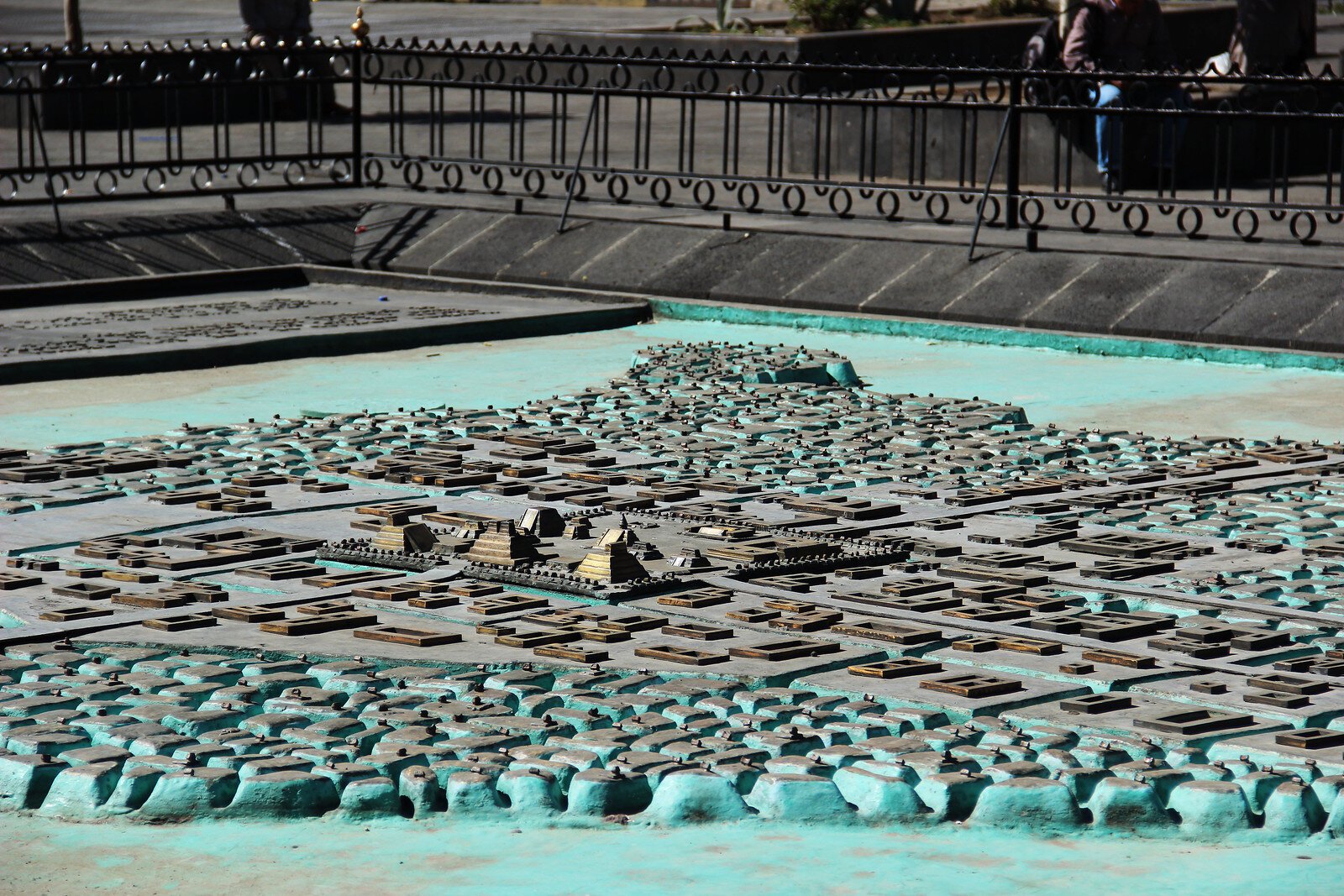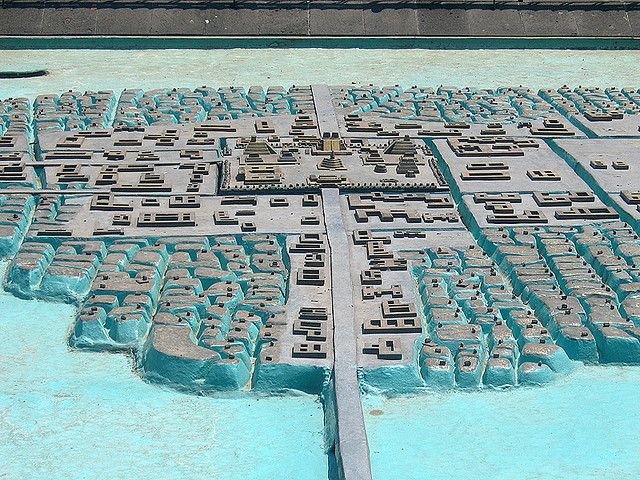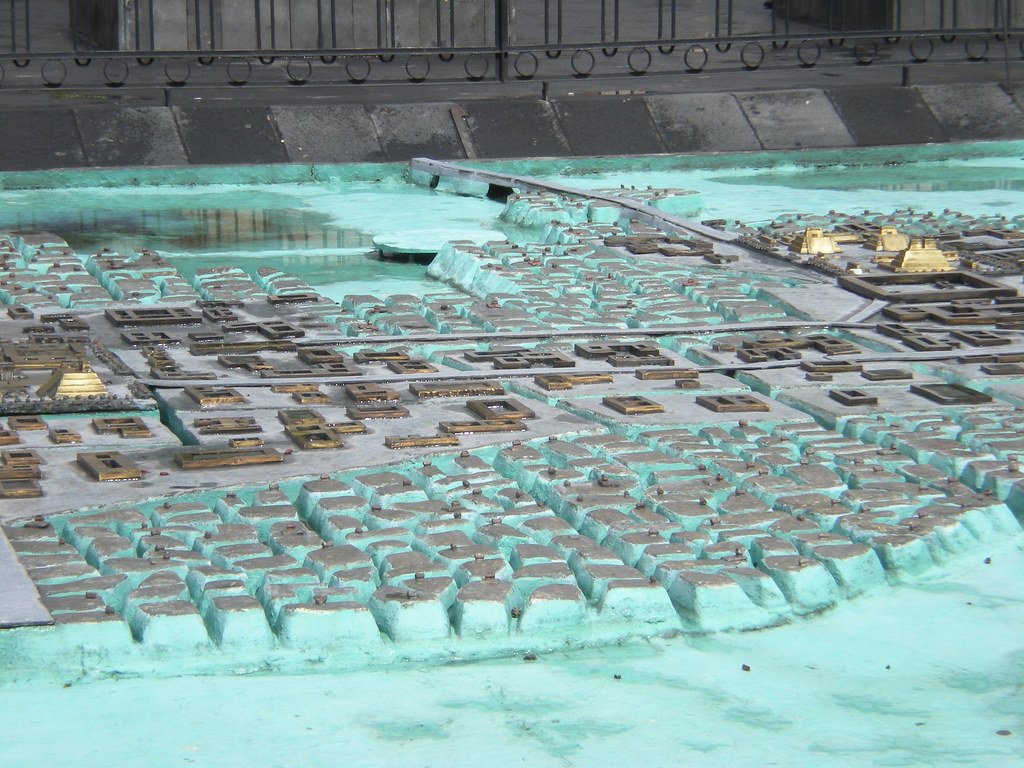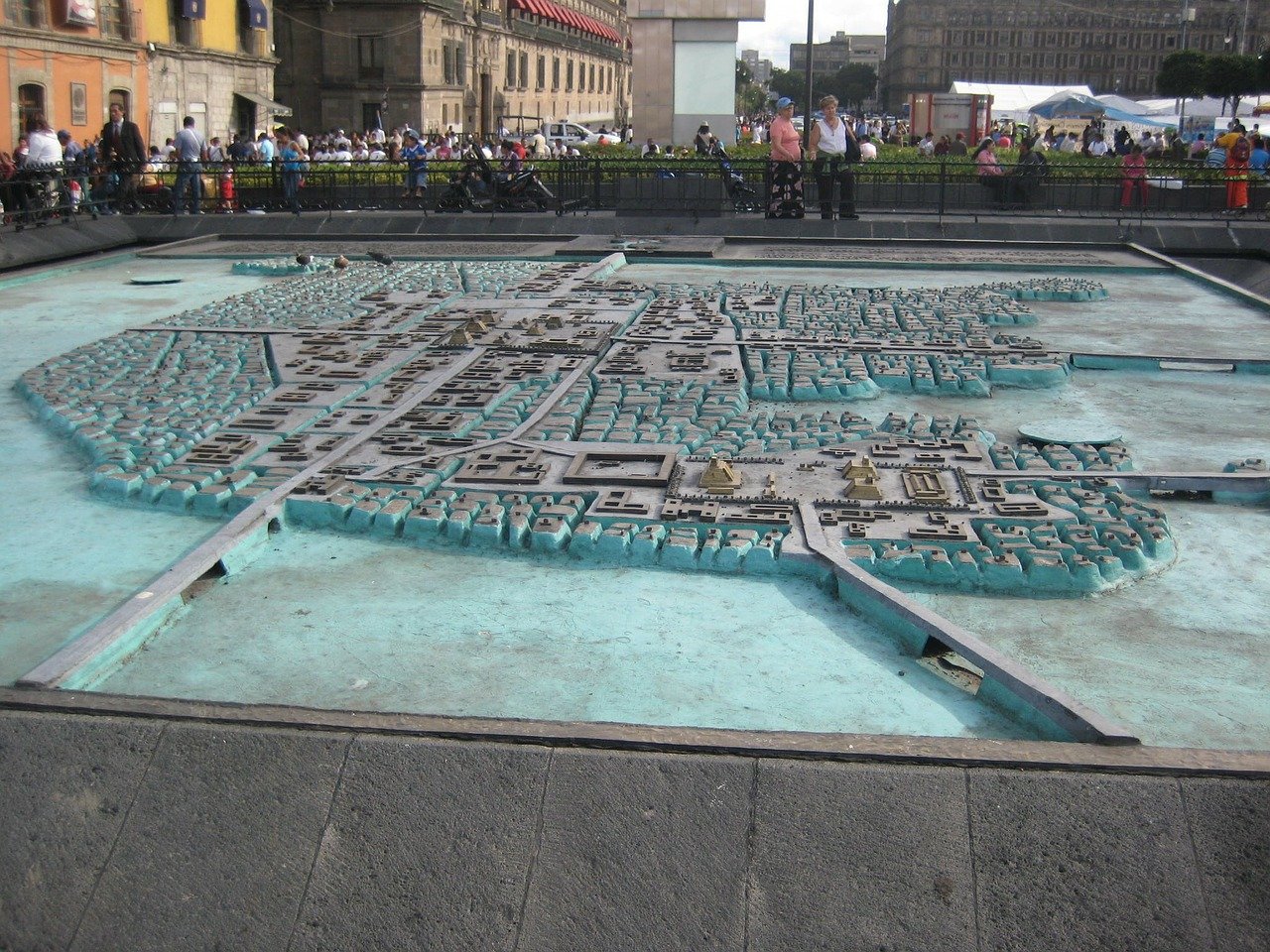The economy of Tenochtitlan was based on agriculture, trade, and tribute from conquered territories. The Aztecs employed a system of agriculture known as 'chinampas', or floating gardens, which were small, rectangular areas set upon the shallow lake bed. They grew various crops, most notably maize, beans, squash, and chili peppers.
Trade was carried out at a local, regional, and long-distance level, with goods from as far away as Central America and the American Southwest reaching Tenochtitlan. The city's grand marketplaces were filled with goods such as textiles, pottery, food, precious stones and metals, feathers, and other items.
Tenochtitlan was the center of Aztec civilization, which was rich in mythology and religious traditions. Society was stratified, with nobles, priests, warriors, traders, artisans, farmers, and slaves each having their place. The Aztecs had a complex system of education, with separate schools for the nobles (calmecac) and the commoners (telpochcalli).
The ruins of the Templo Mayor were rediscovered in the 20th century, and today they provide an important archaeological site in the heart of Mexico City. The rich history of Tenochtitlan continues to influence modern Mexican culture and is a potent symbol of the country's indigenous heritage.
Model of the the Ancient Aztec City of Tenochtitlan, Zocalo Square, Plaza de la Constitucion, Mexico City:
























